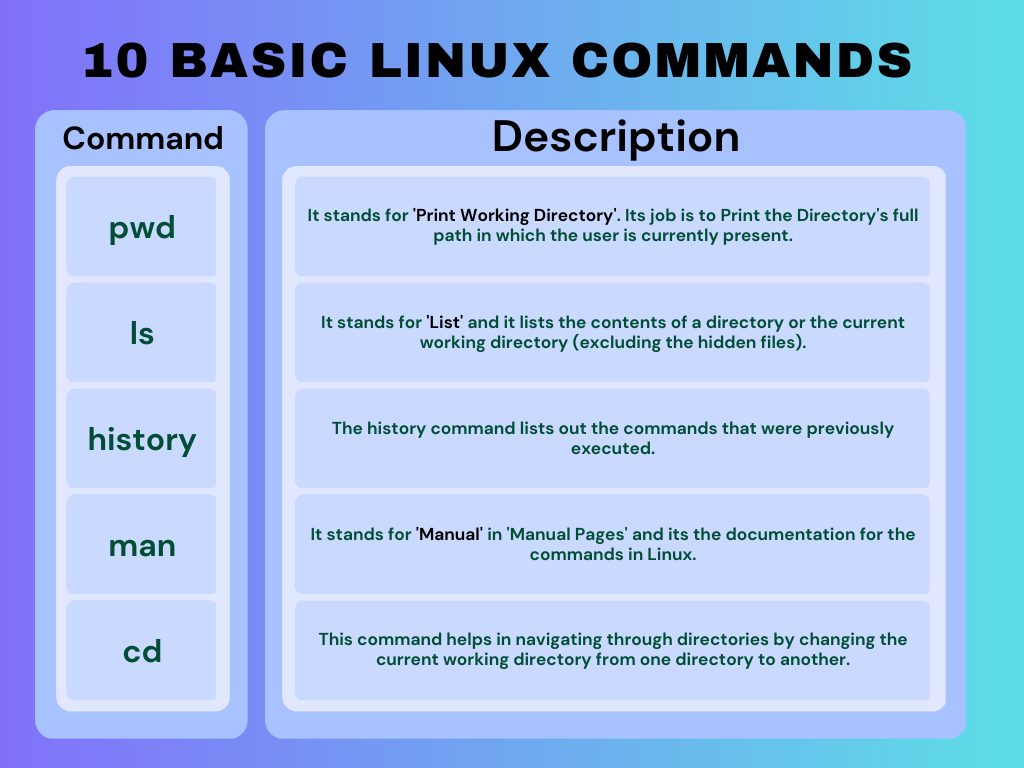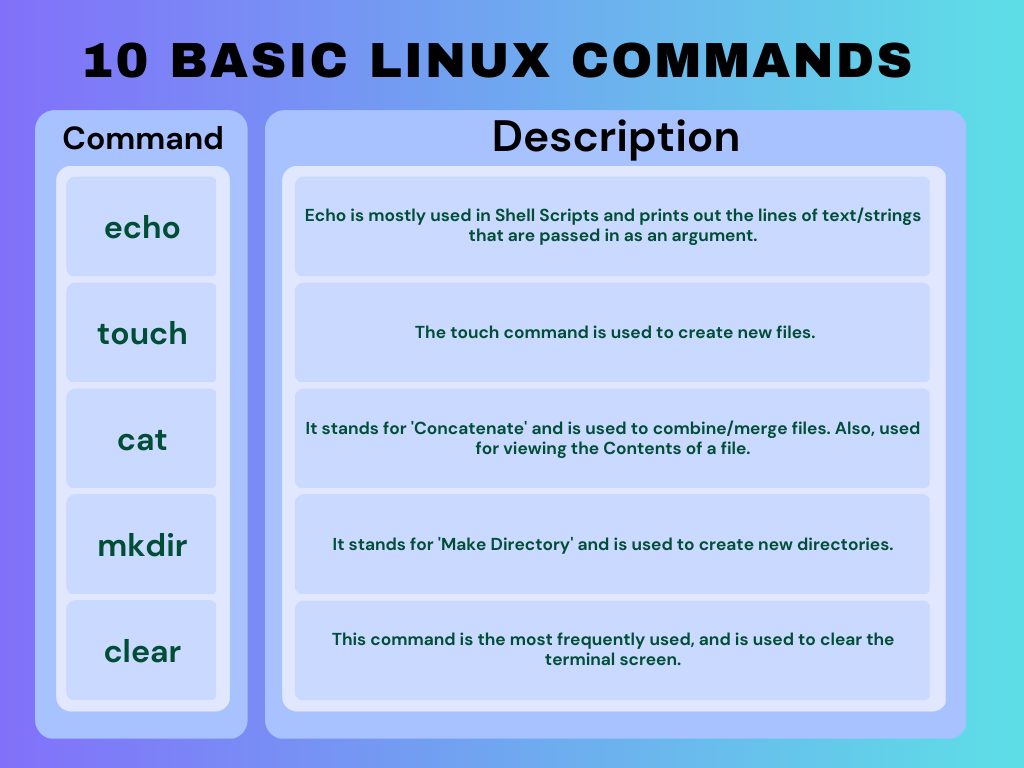10 Most Basic Linux Commands & Installation of a Linux Distro on VirtualBox (Guide Resource)
 Satyam Singh
Satyam Singh

In our previous blog, We got introduced to Linux and got to know some basic and must-to-know Terminologies. In this blog, we'll be discussing the 10 most Basic Linux Commands and I'll Provide you with the Installation guide on how to set up a Linux distro on a VirtualBox.
(Note): - At the end of this article, I have given a Glossary, and All the words mentioned in Italicized text are provided in the Glossary with their description.
Prerequisites
Should be familiar with Basic Linux Terminologies, Like Terminal, Command, etc. Just read my previous blog and you are good to go with this blog.
No other prerequisites. It's Beginner friendly!
10 Most Basic & Commonly Used Linux Commands
pwd - It is the abbreviation of 'print working directory' and this prints the full pathname of the current directory in which the user is present.
ls - It is the abbreviation of 'List' and this command lists all the files and directories present in the current working directory.
(Note: Typing only 'ls' and pressing 'enter' will not list the hidden files.)
ls your_directory_name - It will list all the contents of a directory (except the hidden files.)
ls -a - Here, 'ls' is followed by a hyphen, and a lowercase 'a' i.e '-a' and will list all the files including the hidden files.
ls -t - This command where 'ls' is followed by a hyphen and a lowercase 't' will list the files based on the time when they were last modified.
ls -R - This command where 'ls' is followed by a hyphen and an Uppercase 'R' will list the directories along with their sub-directories.
ls -r - This command where ls is followed by a hyphen and a lowercase 'r' will list the files and directories in reverse order rather than listing in the normal order.
ls -F - This command where ls is followed by a hyphen and an Uppercase 'F' is used to give a Full listing of the files and will list the executable files with a star '*', and lists the directories with their type i.e the directory_name followed by a slash '/'
ls -l - This command where ls is followed by a hyphen and an Uppercase 'l' will provide the long listing of the Directory contents.
All of the above 'ls' commands will list out the directory contents and for that, we have to give the directory name after ls and their above-mentioned options(such as -a, -r, etc)
history - The history command lists out the previously used commands on the terminal.
man - It is the abbreviation of 'Manual' in 'Manual Pages'. You can think of this command as software documentation where you have the information about the commands that you enter after the man command. Like, man ls will print the information about the ls command. and, To quit the man page type in lowercase 'q'.
cd - It is the abbreviation of the 'Change Directory' command which will change the directory from one directory to another or in other words, Helps in Navigating through different Directories.
cd directory_name - will change the directory from the current directory to mentioned directory as in this case its directory_name.
(Note): Just type the cd command, and if you are currently present in the directory(let's call it dir1) then your directory will be simply changed to the root directory.
To verify, The above-mentioned info, Type in cd and then type in pwd and you'll see that you are present in the root directory.
The cd command can be used in many more ways and we'll discuss it in the upcoming blogs, So stay tuned!
echo - The echo command is mostly used in Shell-Scripts. The echo command is used to print out the lines of string/text (that are passed in as an argument) to the terminal screen.
Touch - The Touch command is used to create new files.
cat - It is the abbreviation of 'Concatenate'. The cat command is used to combine/merge files and also used to Display file contents.
mkdir - It is the abbreviation for 'Make Directory'. The mkdir command creates new directories.
clear - The clear command is used to clear the terminal screen.
Installation of Linux Distro on VirtualBox (Guide Resource)
Visit Simply-Linux GitHub Repo for getting the Installation guide
In the Installation guide, the steps are mentioned in the most simple and easiest way possible, and follow the steps mentioned clearly and you'll be good to go with using your newly installed Linux Distro on VirtualBox.
Also, Give the Repo a ⭐ If it helped you in some or the other way.
Summary


Glossary
Hidden Files - A hidden file's name starts with a dot, Like, .hiddenfile.
Executable Files - In Linux, Every file is executable and Linux makes the Executable files independent of the extension-based file name.
Root Directory - The root directory contains all the core utilities that are needed for the proper system operations(will be discussed in the next blog).
Shell Scripts - Shell scripts are text files that contain a series of commands and are used for file manipulation, Program executions, etc.
If you enjoyed reading this article then, do share it on your socials and tell folks about the things you've learned in a summarized way.
You can also mention me on Twitter and write your Key-Takeaways from this blog and Follow me on Hashnode for the next blog of our series 'Simply-Linux'.
Thank you!
Subscribe to my newsletter
Read articles from Satyam Singh directly inside your inbox. Subscribe to the newsletter, and don't miss out.
Written by

Satyam Singh
Satyam Singh
wanted to write more than just code